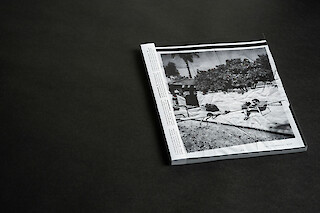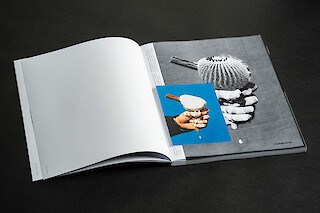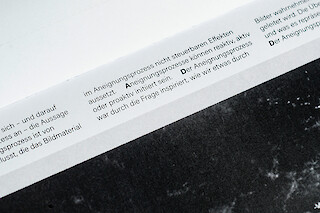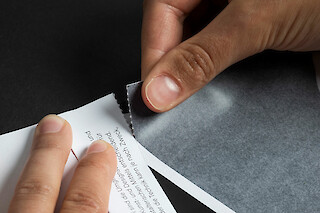How does the process of appropriation take place and how can its potential be made visible? In an age when images are technically reproduced, many designers do not use their own productions, but instead, draw on public collections to produce their work. The processes of appropriation take different shapes. They depend on the material encountered by the designer, the part of the referenced object that ends up being used, and the designer’s own contribution. These processes are situated at the crossroads between the given and the changeable, and between reproduction and transformation. The transformation and thus the designer’s own contribution may have changed over the course of the 21st century and increasingly receded into the background, yet it remains a part of the process which it co-determines.
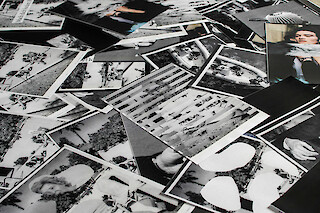
This project examines processes in which artists and designers strategically appropriate images. The object of appropriation, the «image», is the focus here. The processes are examined by means of literature research, interviews, semiotic image analysis and visual experiments. It was found that appropriation is a process which carries on continuously, as long as visual material is available, stored, reproduced and shared. Images that have been appropriated by artists and designers can be re-appropriated. Often, the appropriation enters into a visual dialogue with the referenced object. Feelings of curiosity and exploration on the part of the designer are central elements of this process, particularly when the referenced image is transformed. In the process of appropriation, new associations and connotations emerge as a result, which can inspire the designer to create new artefacts and representations. My own resulting artefact, a picture catalogue, aims to translate this process between reproduction and transformation and reveal its inherent potential.
This project by Carolin Siebeneich explores one of the most burning issues in the area of design: the process of creative appropriation. The subject has been addressed every so often in students‘ projects, as the discourse about appropriation, copying and inspiration is a hugely important aspect for their attitude towards their future profession. Carolin Siebeneich’s work is one of the first to examine appropriation in a very rigorous and research-orientated form, both in terms of design and theory. The project negotiates the subject of appropriation by means of images, but the findings are transferable to other areas of design. These findings, as well as the experiments undertaken, are compiled in a book which invites readers to follow the course of appropriation, appropriate the displayed images themselves and thus continue the story. Appropriation is then something the reader can experience, and the book becomes a medium for gaining insights through this process, which can be regarded as exemplary for design research. Overall, the project is fundamental and crucial to the field of design-related and creative processes and should therefore receive further support.
Websites:
visualcommunication.zhdk.ch/diplom-2020
